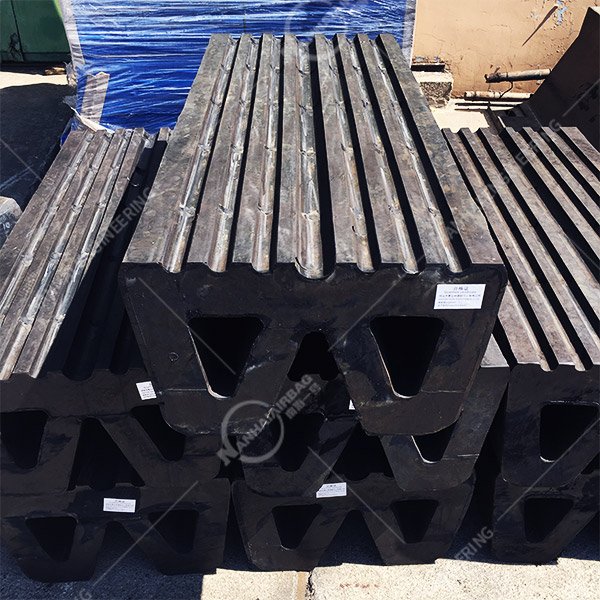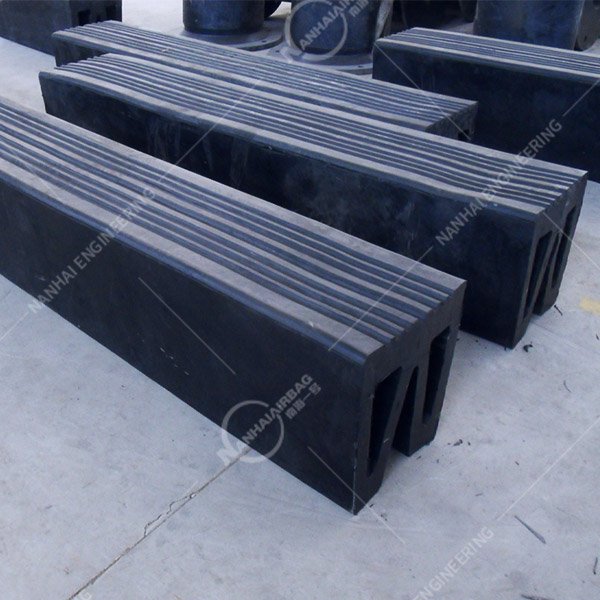Foam Fenders: The Soft, Smart Way to Keep Your Boat Scratch-Free (No More Docking Woes!)
11/09/2025Marine Airbags: The Silent Lifesavers of the Waterfront (No More Launch Nightmares!)
18/09/2025

You’re guiding your 40-foot fishing trawler into the marina when a strong gust pushes the bow sideways. The hull slams into the dock’s metal cleat—and crunch. You freeze. That sound? It’s not just metal meeting fiberglass; it’s your wallet weeping over a $800 gelcoat repair. Sound familiar? For boat owners, marinas, and anyone who’s ever battled a dock, W rubber fenders are the unsung heroes that turn chaotic docking into a “no-sweat” routine. Let’s break down why these rugged, W-shaped workhorses are rewriting the rules of marine protection.
What Are W Rubber Fenders? (The Googly Answer You Need)
W rubber fenders are specialized marine fenders with a unique W-shaped cross-section, designed to maximize shock absorption, reduce hull damage, and outlast standard rubber or metal fenders in harsh waterfront environments. Their contoured profile acts like a natural “shock absorber”: when a boat hits the fender, the W shape compresses and distributes force evenly across the hull, preventing dents, scratches, or structural stress. Made from high-density rubber (often with reinforced steel or polyester cores), they’re built to withstand UV rays, saltwater corrosion, and repeated impacts—making them a staple for marinas, fishing boats, and yacht docks worldwide.
Why This Matters: When “Good Enough” Fenders Cost You Big (And Ruin Your Peace of Mind)
Let’s get real: Docking isn’t just about parking—it’s about protecting your biggest investment. A single hard hit can crack a hull, tear gelcoat, or even damage a boat’s engine mounts. And it’s not just yourwallet taking a hit—marinas lose customers when “rough docking” becomes their reputation.
Take Mike, a Florida charter boat captain. For years, he used standard flat rubber fenders on his 35-foot center console. “They looked tough,” he says, “but every time I docked in rough water, the fenders would flatten out, and the boat would scrape the dock. I was spending $1,500 a year on repairs—and my clients were starting to notice the scratches.”
Mike switched to W rubber fenders. “The difference was night and day,” he says. “The W shape cradles the hull, so even in 2-foot swells, the impact just bounces off. My repair bills dropped to $200 a year, and my clients keep booking because the boat looks pristine.”
Here’s why W rubber fenders are urgent for youroperation:
- •Delicate Hulls Deserve a Soft Landing: Fishing boats, yachts, and even small skiffs have curved, thin hulls. Standard flat rubber fenders concentrate impact on one spot, causing dents or tears. W rubber fenders’ contoured design spreads force across a larger surface, shielding even the most fragile hulls.
- •Durability = Long-Term Savings: W rubber fenders last 2–3x longer than standard rubber fenders (5–7 years vs. 2–3 years) thanks to their reinforced cores and UV-resistant materials. For marinas, that means fewer replacements and happier customers.
- •Weatherproof Performance: Saltwater, UV rays, and extreme temperatures? No problem. W rubber fenders are engineered to withstand harsh conditions, unlike metal fenders (which rust) or flimsy plastic alternatives.
How Do W Rubber Fenders Work? The Science of “Docking Without Drama”
These aren’t your average pool toys—they’re engineering marvels built for marine chaos. Here’s what makes them tick:
1. The W Shape = Superior Shock Absorption
The W profile isn’t just for looks. When a boat hits the fender, the angled sides of the W compress slowly, spreading the impact force across the entire length of the hull. This “squishy” action reduces peak force by up to 60% compared to flat rubber fenders. Translation: No more concentrated dings or cracks—just a gentle “thud” and a scratch-free hull.
2. Reinforced Cores = Built to Last
Most W rubber fenders have steel or polyester cores wrapped in high-density rubber. The core adds stiffness to prevent the fender from deforming permanently, while the rubber absorbs energy. Together, they create a fender that bounces back after every impact—no flattening, no sagging.
3. UV and Saltwater Resistance = No Rust, No Rot
Standard rubber fenders degrade quickly in sunlight and saltwater. W rubber fenders? They’re treated with anti-UV additives and made with corrosion-resistant materials, so they stay flexible and strong for years—even in the harshest coastal environments.
W Rubber Fenders vs. the Competition: Why They’re a Game-Changer
Not all fenders are created equal. Here’s how W rubber fenders outshine their peers:
1. W Rubber Fenders vs. Standard Rubber Fenders
Standard flat rubber fenders are cheap but ineffective. They flatten under pressure, concentrate impact, and wear out fast. W rubber fenders’ contoured design solves all that—spreading force, resisting deformation, and lasting longer.
2. W Rubber Fenders vs. Marine Airbags
Marine airbags (inflatable rubber tubes) are great for launching or lifting boats, but they’re not built for docking. They require inflation, deflate over time, and offer inconsistent protection. W rubber fenders? They’re always ready—no pumps, no leaks—just reliable, consistent cushioning.
3. W Rubber Fenders vs. Metal Fenders
Metal fenders (steel, aluminum) are durable but rigid. They transfer impact back to the boat, causing hull stress and dents. W rubber fenders absorb and redirect energy, reducing strain on both the vessel and the dock. Plus, metal fenders rust in saltwater—W rubber fenders? They’re corrosion-proof.
People Also Ask: Your Top W Rubber Fender Questions
Q: How do I choose the right size W rubber fender?
A: Measure your boat’s hull width at the waterline (most boats need 12–18 inches of coverage per side). For small skiffs or kayaks, 12–16 inches works. For 25–35-foot boats, 20–24 inches is ideal. Larger vessels (40+ feet) need 28–36-inch fenders.
Q: Are they easy to install?
A: Super simple. Most W rubber fenders come with heavy-duty brackets or straps. For docks, mount them 12–18 inches above the waterline (adjust based on your boat’s freeboard). For boats, attach them to cleats or railings—you’ll be ready to dock in minutes.
Q: Can they be used in both saltwater and freshwater?
A: Absolutely. W rubber fenders are made with non-toxic, corrosion-resistant materials, making them safe for lakes, rivers, and oceans.
Q: Are they worth the cost compared to cheaper fenders?
A: 100%. A 150Wrubberfendermightcosttwiceasmuchasabasicrubberone,butitlasts3–4xlongerandslashesrepairbills.OnemarinainCaliforniasaved20,000/year after switching—enough to replace 100+ standard fenders.
Q: Do they come in different colors or styles?
A: Yes—most suppliers offer black, gray, or custom colors to match your dock’s aesthetic. Some even have reflective strips for visibility at night.
Final Thoughts: Don’t Let Docking Disasters Sink Your Summer
Docking shouldn’t feel like a high-stakes game. With W rubber fenders, you’re not just buying a fender—you’re buying peace of mind. Peace of mind that your boat stays scratch-free, your marina keeps happy customers, and your wallet avoids unnecessary expenses.
Ready to upgrade? Start by measuring your boat and dock, then check out trusted marine suppliers (look for those specializing in marine fenders). Your hull, your dock, and your weekend plans will thank you—no more “crunch” moments, just smooth, worry-free docking.
Keywords: marine airbags, marine fenders, rubber fenders
